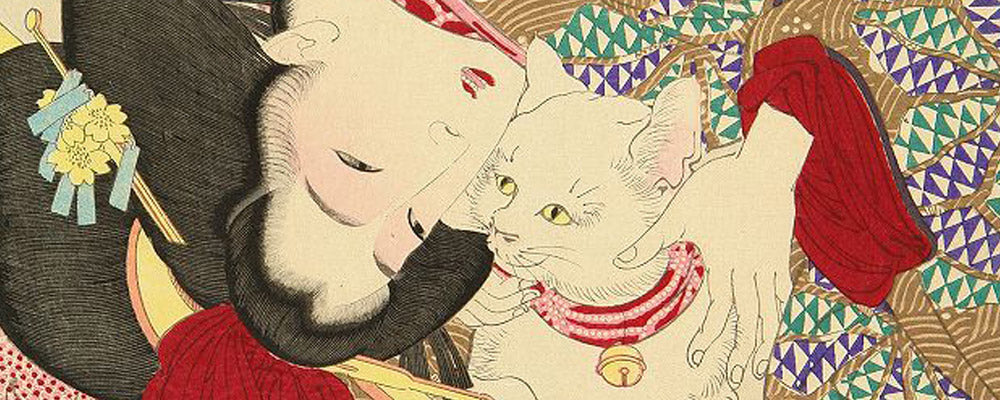
Hiro: Student and Novice Collector
Share
Hiro is a novice collector, and has only been collecting for a year. He loves Japanese culture and ukiyo-e is an essential part of it. He is currently a university student so he's unable to fully indulge himself in the joys of collecting, but he's looking forward to getting a steady job and moving to Japan. In the future Hiro would love to have his own ukiyo-e online store and someday hold exhibitions, and even write a book on ukiyo-e. One of his goals is to have a collection of prints depicting aspects of the Kojiki and Shinto religion.
Kojiki:Completed in the year 712, The Kojiki is the oldest existing record of Japanese history, and is a text that is vital to any discussion of ancient Japanese history. The Kojiki is divided into three books, and the stories of the gods are all recorded in the first book.
Shinto: a religion that originated in Japan. Classified as an East Asian religion by scholars of religion, its practitioners often regard it as Japan's indigenous religion and as a nature religion.
Hiro says that there is no connection between the two but making ukiyo-e is in some ways similar to Buddhist sand mandalas, the original drawing made by the artist is destroyed during the printing process, just like the mandalas at the end of the ritual. Hiro believes this to be one of the unique aspects of the genre. Other compelling reasons to collect and appreciate ukiyo-e are:
- Ukiyo-e collecting can be quite affordable, you don't need to be extremely rich in order to allow yourself to buy some originals.
- It is also appealing that ukiyo-e production itself is a team process: artists, carvers, printers and publishers worked on it to achieve the final results we can admire today.
- From discovering the stories depicted on the prints, one can learn a lot about the culture, customs, beliefs and values of Japan this way. It is also fun the other way round when you read a book about a certain Japanese subject/story and then you recognize it illustrated on one of the prints.
Hiro's favorite artists are Utamaro, Eisho, Kuniyoshi, and Yoshitsuya. In the Meji Era he likes Yoshitoshi, and Chikanobu. From the Shin Hanga, his favorite artists are Torii Kotonobe, and Shinsui Ito.
Hiro's advice for beginning collectors is threefold:
- Try out auctions, there you can purchase prints for a lot cheaper than on big ukiyo-e websites. What's good about ukiyo-e collecting is that it is not like collecting paintings, there are several copies of the same print so if you could not get it one time there will most likely be a next time.
- This advice might be controversial among collectors, but I believe if you want to display your prints, don't worry about getting an original, there are many great quality reprints especially if you are interested in Hiroshige or Hokusai. For example you can try out Adachi Woodblock Prints https://www.adachi-hanga.com/ukiyo-e-en/
- Also I recommend you browse the websites of different museums like The MET and The British Museum, you can find high quality images and information there.
Favorite Prints


